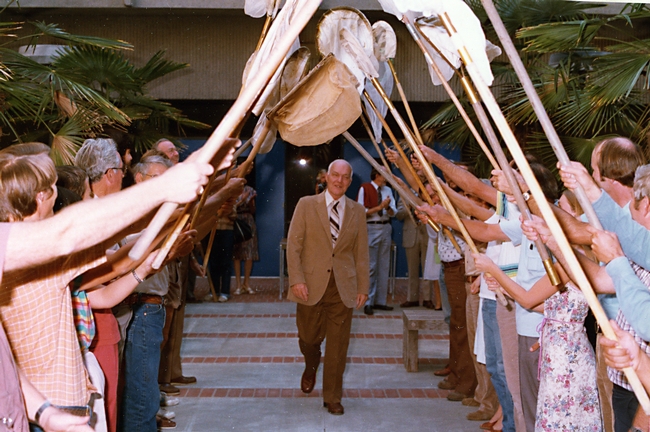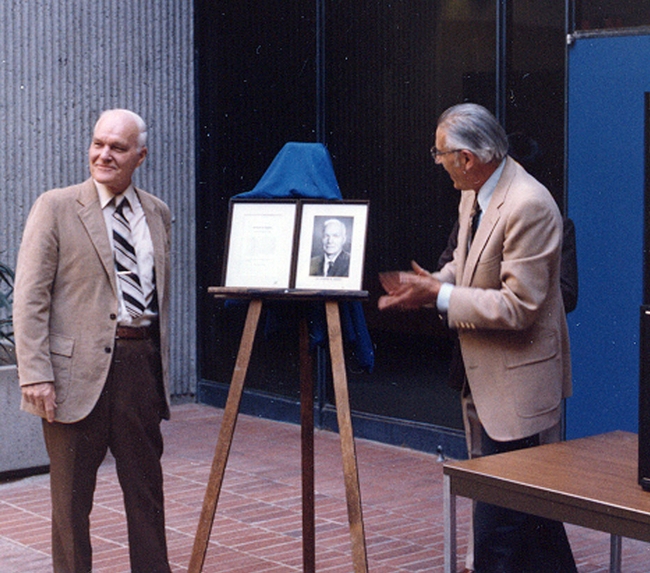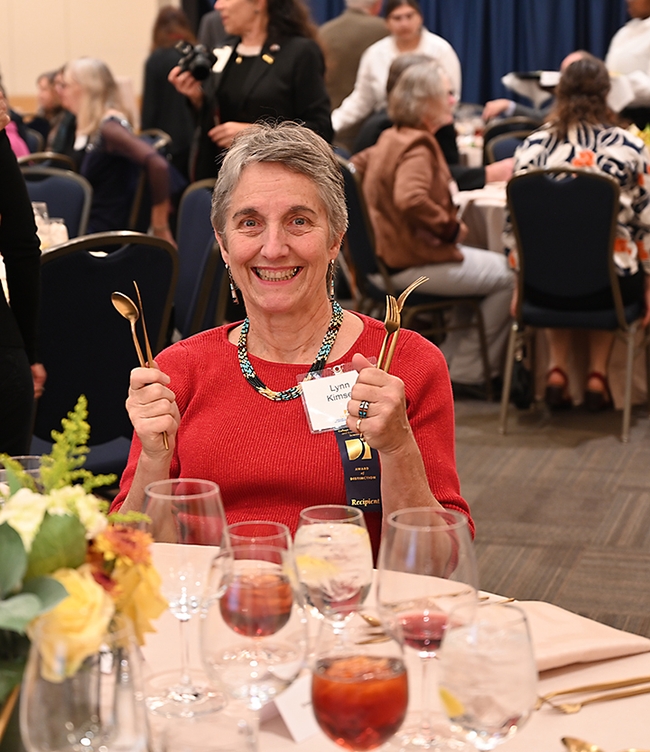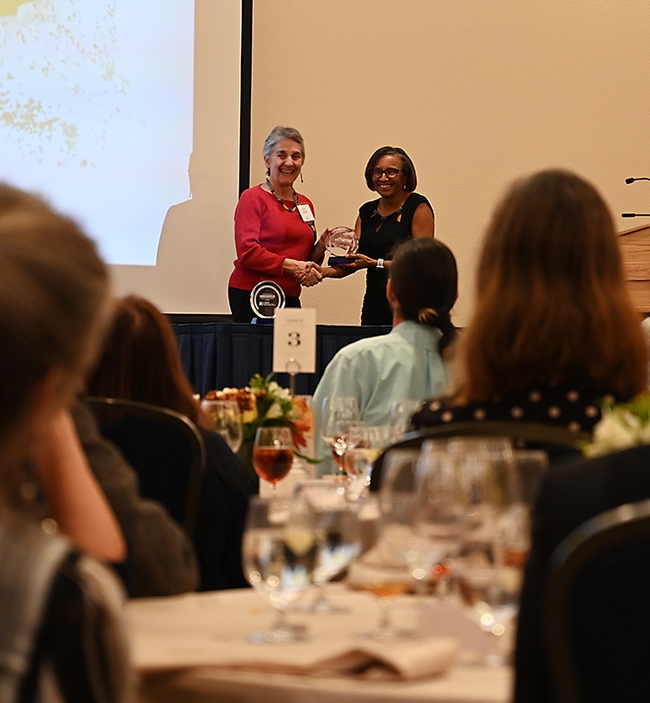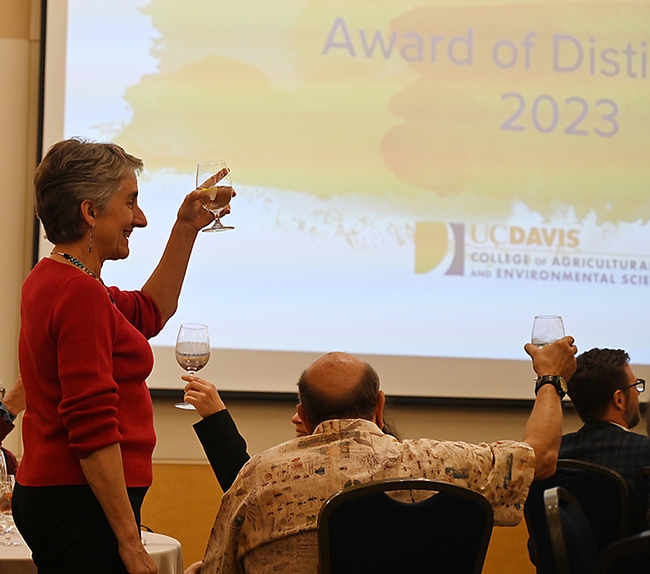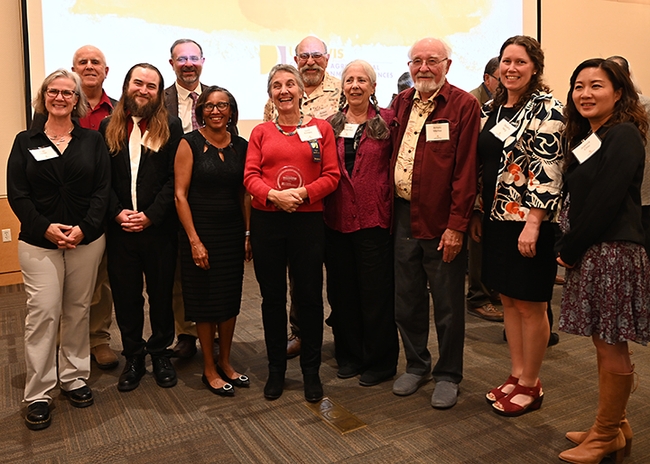- Author: Kathy Keatley Garvey
The Bohart Museum of Entomology recently hosted an evening open house to engage and inform UC Davis Department of Entomology and Nematology biologists on how to streamline their efforts at all stages of their research, from collecting insects and arachnids to using the Bohart specimens.
More than two dozen scientists, including UC Davis undergraduates, graduate students, postdoctoral scholars, researchers, associates and faculty, attended. They gathered information on:
- Making wet, dry or cryo collections
- Donating, borrowing or sampling museum specimens from the Bohart or from collections around the world
- Prepare specimens and formatting labels
- Field collecting (equipment, permits, storing, regionally and internationally)
- Identifications services
- Language for grants, and budget development
- Science communication: public outreach, and broader impacts
UC Davis distinguished professor Lynn Kimsey, director of the Bohart Museum, led the event. Entomologist Jeff Smith, who curates the lepidoptera collection, offered a pinning demonstration. (See one of his previous videos.) Others assisting were other Bohart staff and associates, including the laboratory of arachnologist Jason Bond, the Evert and Marion Schlinger Endowed Chair, UC Davis Department of Entomology and Nematology, and associate dean, UC Davis College of Agricultural and Environmental Sciences.
The Bohart Museum has an online playlist of 11 short videos on "How to Make an Insect Collection." It was the brainchild of UC Davis distinguished professor James R. Carey, who led a class of entomology students 13 years ago to create tightly scripted clips, with an emphasis on brevity, simplicity and low cost.
The entire series can be viewed in less than 10 minutes. The clips range in length from 32 seconds to 77 seconds. UC Davis forensic entomologist Robert Kimsey provided the introductory narration for each clip. See Bohart web page for more information on insect collecting and links to the videos.
- Hand Collecting
- Using an Aspirator
- Ground Collecting
- Aquatic Collecting
- Using Nets
- How to Kill Insects
- Pinning
- How to Point Mount
- Labeling
- Spreading
- Storage and Display
The Bohart Museum, founded in 1946, houses a global collection of eight million insect specimens. The insect museum is open to the public Mondays through Thursdays, from 8 a.m. to noon, and from 1 to 5 p.m. For more information contact bmuseum@ucdavis.edu or telephone (530) 752-0493.
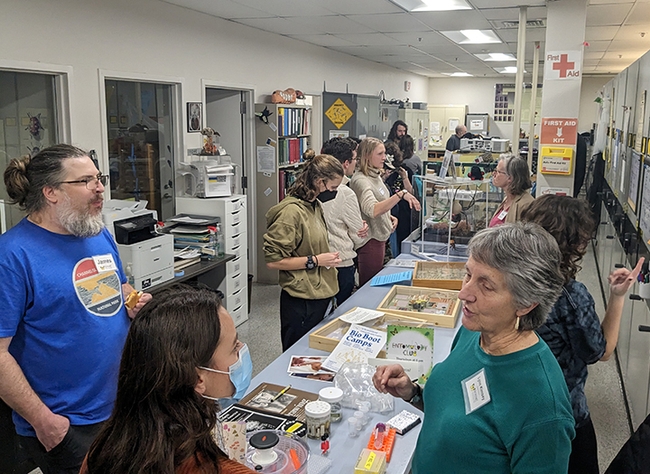
- Author: Kathy Keatley Garvey

The open house, themed "Social Wasps," is free and family friendly. Parking is also free.
Kimsey defines social wasps as "wasps that live together and cooperate in a colony, with female workers and a queen; only the queen has babies."
What drew her to study social wasps? "I just like stinging things in general and their anatomy and social behavior are really interesting."
Kimsey lists some of the common myths about social wasps as:
- They are often seen as malevolent beings out to get you and will chase you
- That they serve no purpose except to annoy us
- If you're allergic to bee stings you'll be allergic to wasp stings
- A copper penny place on a sting will make it go away
The public should know that social wasps "provide valuable ecosystem services; do pest control, and assist in nutrient recycling and pollination," she said.
"There are about 2,000 described species of social wasps worldwide," Kimsey said, and probably around 500 species undescribed.
The Bohart Museum has approximately 50,000 vespids in its collection, "and clearly the most popular is the Northern giant hornet, Vespa mandarinia," she said. The press dubbed it "Murder hornet." The Entomological Society of America recently changed its common name, "the Asian giant hornet," to "northern giant hornet."
The hornet, considered the world's largest hornet, is native to Asia. It was first detected in the Pacific Northwest in 2019, and with nests found in 2021.
Kimsey is a recognized authority on insect biodiversity, systematics and biogeography of parasitic wasps, urban entomology, civil forensic entomology, and arthropod-related industrial hygiene. She holds bachelor and doctoral degrees from UC Davis. She joined UC Davis entomology faculty in 1989, and has served as director of the Bohart Museum since 1990.
She plans to retire this year, but not from research and public service.
Kimsey served as president of the International Society of Hymenopterists from 2002-2004, and as a member of the board of directors of the Natural Science Collections Alliance in 2000 and 2001. The Pacific Branch, Entomological Society of Ameica (PBESA) singled her out for its highest honor, the C. W. Woodworth Award, in 2020. She received the PBESA Systematics, Evolution, and Biodiversity Award in 2014 and was a member of 'The Bee Team' that won the PBESA Outstanding Team Award in 2013. The UC Davis Academic Senate honored her with its Distinguished Scholarly Public Service Award in 2016 in recognition of her outstanding work. She received the UC Davis College of Agricultural and Environmental Sciences (CA&ES) Exceptional Faculty Award in 2023.
The Bohart Museum also houses a live "petting zoo" (Madagascar hissing cockroaches, stick insects, tarantulas and more), and an insect-themed gift shop.
For more information, contact the Bohart Museum at bmuseum@ucdavis.edu or access the website at https://bohart.ucdavis.edu
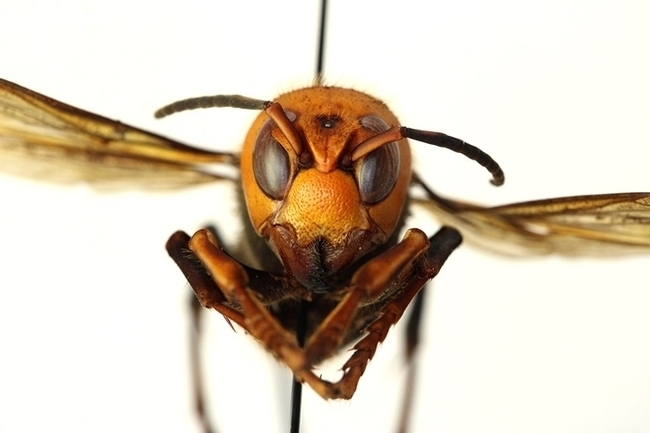
- Author: Kathy Keatley Garvey
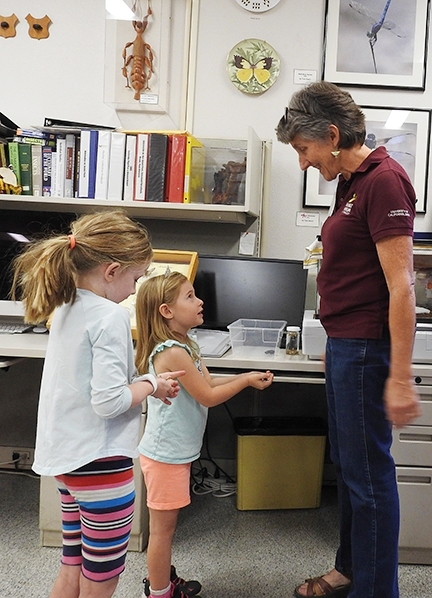
The event, set for Saturday, Feb. 10, will feature 10 museums or collections:
- Anthropology Museum, 328 Young Hall and grounds, open from noon to 4 p.m.
- Arboretum and Public Garden, Habitat Gardens in the Environmental GATEway, adjacent to the Arboretum Teaching Nursery on Garrod Drive, 10 a.m. to 2 p.m.
- Bohart Museum of Entomology, Room 1124 and main hall of the Academic Surge Building, 455 Crocker Lane, 10 a.m. to 2 p.m.
- Botanical Conservatory, the greenhouses along Kleiber Hall Drive, 10 a.m. to 2 p.m.
- California Raptor Center, 1340 Equine Lane, off Old Davis Road, 9 a.m. to 3 p.m.
- Center for Plant Diversity, Katherine Esau Science Hall off Kleiber Hall Drive, 10 a.m. to 2 p.m.
- Nematode Collection, Katherine Esau Science Hall, off Kleiber Hall Drive, 10 am. to 2 p.m..
- Museum of Wildlife and Fish Biology, Room 1394, Academic Surge Building, 455 Crocker Lane, 10 a.m. to 2 p.m.
- Paleontology Collection, Department of Earth and Planetary Sciences, 1309 Earth and Physical Sciences Building, 434 LaRue Road, 10 a.m. to 2 p.m.
- Phaff Yeast Culture Collection, Robert Mondavi Institute Brewery and Food Processing facility, Old Davis Road, 10 a.m. to 2 p.m.
Each year more than 200 volunteers--students, staff and faculty--from across campus help more 4,000 visitors--including other UC Davis students, staff and faculty--"learn about biodiversity through our amazing biological collections," said UC Davis Biodiversity Museum Day chair Tabatha Yang, education and outreach coordinator for the Bohart Museum of Entomology.
The Bohart Museum founded UC Davis Biodiversity Museum Day.
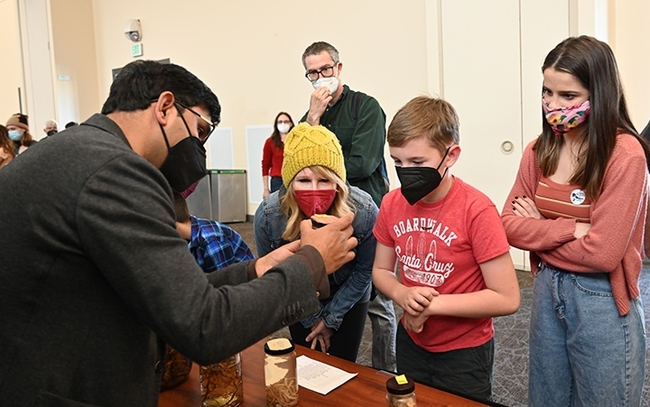
- Author: Kathy Keatley Garvey
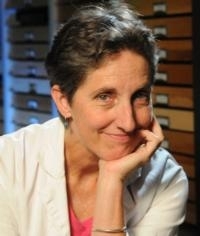
The schedule:
Saturday, Jan. 20:
"Social Wasps," 1 to 4 p.m., featuring UC Davis distinguished professor Lynn Kimsey, director of the Bohart Museum. She recently received the 2023 Exceptional Faculty Award from the College of Agricultural and Environmental Sciences. Kimsey, a recognized authority on insect biodiversity, systematics and biogeography of parasitic wasps, urban entomology, civil forensic entomology, and arthropod-related industrial hygiene, is a 34-year member of the UC Davis entomology faculty. She has directed the Bohart Museum since 1990. She plans to retire in 2024. (See news story)
Saturday, Feb. 10:
13th Annual Biodiversity Museum Day, all day. Last year 13 UC Davis museums or collections participated: Arboretum and Public Garden, Bohart Museum of Entomology, Botanical Conservatory. California Raptor Center. Center for Plant Diversity, Department of Anthropology Museum, Marine Invertebrate Collection, Museum of Wildlife and Fish Biology, Nematode Collection, Department of Earth and Planetary Sciences Paleontology Collection, and Phaff Yeast Culture Collection.
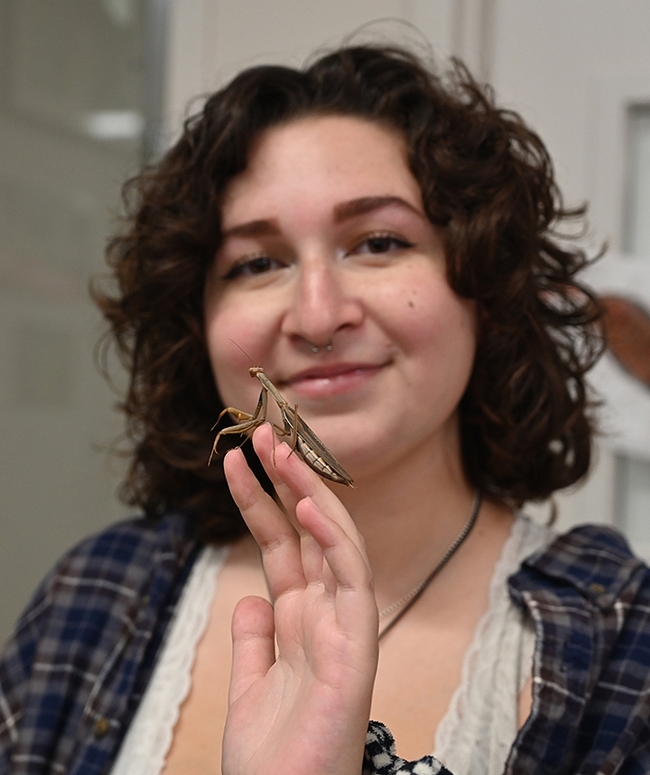
"Grasshoppers, Crickets and Katydids." Talk and a question-and-answer forum from 1 to 2 p.m. Open museum, 2 to 4 p.m. Heading the event is UC Davis undergraduate student Sol Wantz, a senior majoring in entomology and a member o the lab of community ecologist and professor Neal Williams. She serve as president of the UC Davis Entomology Club.
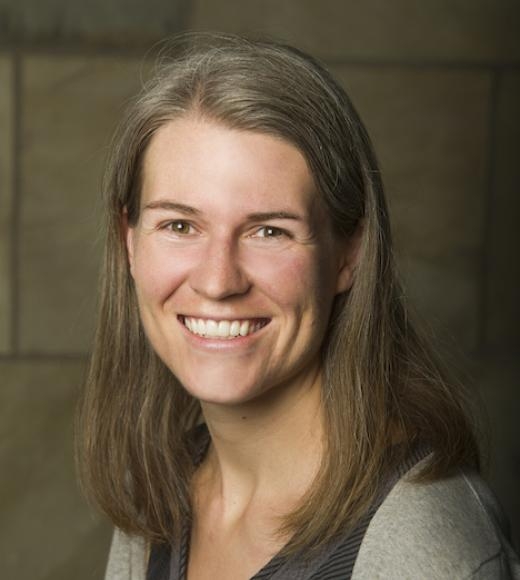
110th UC Davis Picnic Day, all day. This is billed as the largest student-run event in the country. It is UC Davis' annual open house with hundreds of free and family friendly events. Entomology displays, exhibits and activities planned by the Department of Entomology and Nematology will be at the Bohart Museum and at Briggs Hall.
Sunday, May 19:
"Bees: Both Wild and Managed," 1 to 4 p.m. Presenters will include community ecologist Rachel Vannette, associate professor and vice chair of the UC Davis Department of Entomology and Nematology.
The Bohart Museum, founded in 1946, is located in Room 1124 of the Academic Surge Building, 455 Crocker Lane, UC Davis campus. It houses a global collection of eight million insect specimens, plus a live petting zoo (including Madagascar hissing cockroaches, stick insects, and tarantulas) and a insect-themed gift shop, stocked with t-shirts, hoodies, jewelry, books, posters, pens, and more.
The Bohart Museum is open to the public Monday through Thursday. Casual walk-in hours are from 9 a.m. to noon and from 1 to 5 p.m. Pre-arranged tours (schools, scouts, UC classes) may also occur during these times. The museum will be closed for the winter holiday break, Dec. 23-Jan. 1. More information is on the website or by contacting bmuseum@ucdavis.edu. Tabatha Yang serves as the education and outreach coordinator, and Brennen Dyer as the collections manager.
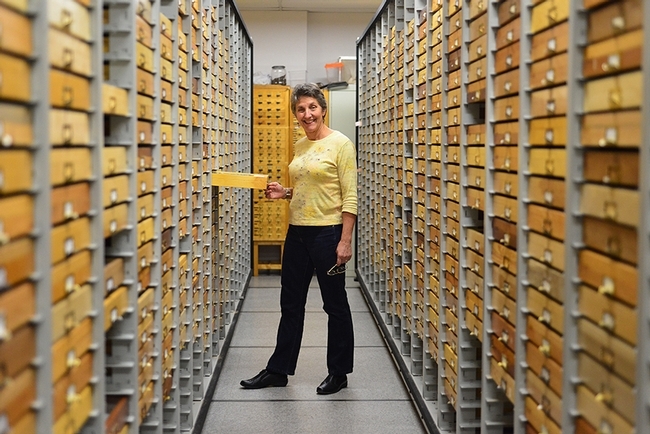
- Author: Kathy Keatley Garvey
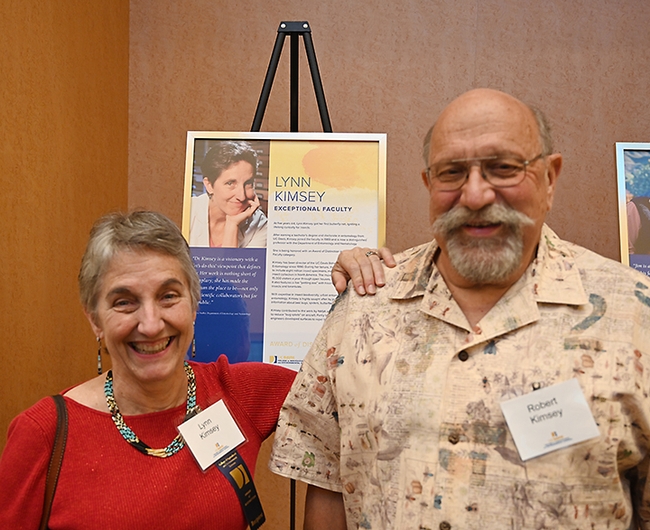
When the UC Davis College of Agricultural and Environmental Sciences (CA&ES) honored UC Davis distinguished professor Lynn Kimsey, director of the Bohart Museum of Entomology, as the recipient of its 2023 Exceptional Faculty Award, she was asked to trace her interest in insects and to recall some of her fondest UC Davis memories.
One of the funniest memories, Kimsey related, occurred at Briggs Hall in 1986 when noted UC Davis entomology professor Richard "Doc" Bohart (1913-2007) received a 21-Insect Net Salute at the campuswide dedication of the museum in his honor. Entomology faculty and students lined up with their insect nets, forming an archway as Doc Bohart sauntered through. UC Davis Chancellor James Meyer (1922-2002) conducted the dedication. At the time, Kimsey was a postdoctoral scholar in the Doc Bohart lab. He had earlier served as her major professor.
The CA&ES awards dinner, held Nov. 2 in the Athletic Recreation Center (ARC) Ballroom, celebrated five award recipients. In addition to Kimsey, spotlighted were: Alumnus of the Year, James Finch, 1989; Early Career Alumnus, Jeffrey Sparks 2014; Distinguished Friend of the College, Tony Turkovich; and Exceptional Staff Award, Lisa Nash Holmes.
CA&ES Dean Helene Dillard praised the recipients for serving "their communities and the university in a way that exemplifies the spirit of our college and the campus." Prior to the award presentations, the crowd watched a video of each recipient.
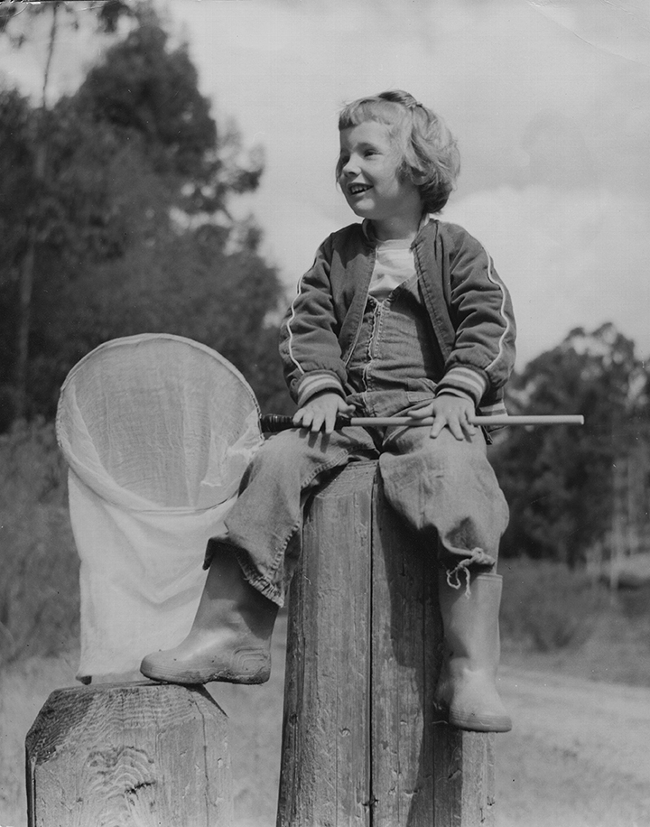
Why did she choose to study at UC Davis? "It was one place in the state that had an entomology program," said Kimsey, who holds two entomology degrees from UC Davis: a bachelor's degree (1976) and a doctorate (1979). "I got to pursue my bug interests. I know it was kind of weird, but even as a little kid it was fun." A portrait of her at age 5, holding an insect net, graces the Bohart Museum.
"Uc Davis," Kimsey added, "has been my home for decades."
Kimsey, a recognized authority on insect biodiversity, systematics and biogeography of parasitic wasps, urban entomology, civil forensic entomology, and arthropod-related industrial hygiene, is a 34-year member of the UC Davis entomology faculty. She has directed the Bohart Museum since 1990.
When "Doc" Bohart founded the museum in 1946, it included only 400 insect specimens at its Briggs Hall location. Under Kimsey's tenure, it has grown to a global collection of eight million insect specimens in Room 1124 of the Academic Surge Building, 455 Crocker Lane, and is the seventh largest insect collection in North America.
"The importance of what Dr. Kimsey does and the importance of insect specimens in museums cannot be overstated," wrote nematologist Steve Nadler, professor and then chair of the Department of Entomology and Nematology, in his letter of nomination. "They are a valuable resource for the agricultural community, public health, forensic entomology, medicine and criminology, environmental biology, and the pest control industry, as well as the public."
Nadler described Kimsey as a visionary with a “let's-do-this” viewpoint that defines her. "Her work is nothing short of exemplary; she has made the museum the place to be—not only for scientific collaborators but for the public."
The Bohart draws an average of 15,000 visitors a year, adds an average of 30,000 new specimens annually, and loans an average 7000 specimens yearly to scientists worldwide. It supports campus classes with specimens, live insects and exhibits in keeping with its mission: “Understanding, documenting and communicating terrestrial arthropod diversity.”
It is also the home of an insect-themed gift shop (proceeds benefit the Bohart's educational activities) and a live “petting zoo” that includes Madagascar hissing cockroaches, stick insects and tarantulas.
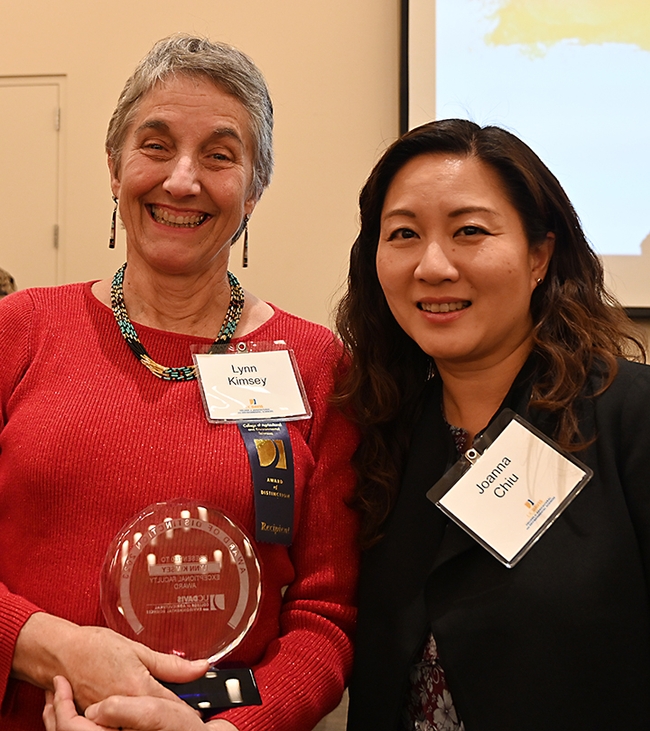
The nomination packet included letters of support from numerous colleagues and friends. They included longtime colleague Arnold Menke of Bisbee, Ariz., whose major professor, like Kimsey, was Doc Bohart; professor Jason Bond, the Schlinger Endowed Chair, UC Davis Department of Entomology and Nematology, and CA&ES associate dean; Frank Zalom, UC Davis distinguished professor emeritus; James Carpenter, American Museum of Natural History curator; and Fran Keller, who was Kimsey's doctoral student.
Wrote Bond: "Professor Kimsey is an internationally recognized expert in insect systematics and taxonomy who specializes in the evolution and taxonomy of two wasp families. She has made an incredible number of contributions to the field of insect systematics that includes > 120 peer reviewed papers, along with a number of book chapters, books, and monographs...Her publications are found in among the top journals appropriate for her field."
"Lynn is an outstanding taxonomist with many publications on various wasp groups, and other insects," wrote Menke. "She has international recognition for her taxonomic work. Included in her bibliography are several books including the world revision of the wasp family Chrysididae with R. M. Bohart in 1990 which is a landmark publication."
Menke praised Kimsey for developing "an outstanding public relations situation," adding that "She has fostered in children (and adults) an appreciation of insects and their world. Lynn has all sorts of living creatures for them to touch and experience first hand. Because of this Lynn has caused many students to take entomology as a career. I know of no other entomological institution that has done what Kimsey has in the Bohart Museum. High school students are interns in the museum, as are undergraduates. Lynn also guides the study of her graduate students at the museum. In addition, she publishes a newsletter in full color (Bohart Museum Society Newsletter) in which she covers stories about insects that are very informative. For example, one of the last issues has an article on fleas which is comprehensive, and doubtless of great interest to people who have encountered these noxious creatures."
The nominating team also described Kimsey as a favorite among the news media, with her ability to translate complex subjects into lay language, and her love of people. Over her 34 years at UC Davis, she has granted thousands of interviews to news outlets, including British Broadcasting System, New York Times, National Geographic, Associated Press, and Los Angeles Times.
Kimsey served as president of the International Society of Hymenopterists from 2002-2004, and as a member of the board of directors of the Natural Science Collections Alliance in 2000 and 2001. The Pacific Branch, Entomological Society of Ameica (PBESA) singled her out for its highest honor, the C. W. Woodworth Award, in 2020. She received the PBESA Systematics, Evolution, and Biodiversity Award in 2014 and was a member of 'The Bee Team' that won the PBESA Outstanding Team Award in 2013. The UC Davis Academic Senate honored her with its Distinguished Scholarly Public Service Award in 2016 in recognition of her outstanding work.
Kimsey served as the vice chair of the UC Davis Department of Entomology in 2005-2006 and again in 2009-2010 and chaired the department in 2008-2009. She plans to retire in 2024 but will continue her research and public service at the Bohart Museum.
Related Story:
Amazing Story About What Entomologist Lynn Kimsey Recorded in San Francisco Bay 50 Years Ago--Bug Squad blog, Aug. 23, 2021

